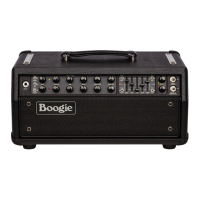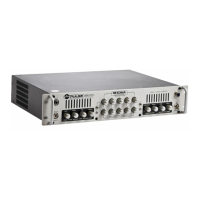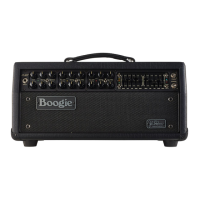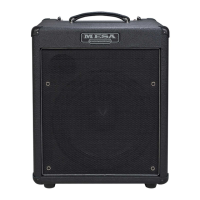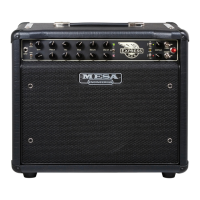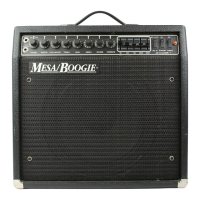PAGE 37
POWERUP
When the amplifier is turned on, the channel and other on/o functions will be selected as per the amplifier’s
switch settings, and the STORE LED will flash once.
MESA FTSW
Refer to the Rear Panel section.
MIDI INPUT
Refer to the Rear Panel section.
MIDI THRU/OUT
Refer to the Rear Panel section.
MIDI CHANNEL SELECT
Refer to the Rear Panel section.
MIDI MESSAGES OVERVIEW
The amplifier is compatible with all MIDI foot controllers. The MIDI Channel can be easily changed to any one
of sixteen channels via the MIDI CHANNEL SELECT SWITCH. Whenever a MIDI Program Change message or
MIDI Control Change message is received, the STORE LED will flash once, confirming the reception of MIDI
messages, whether valid or not, and that the amplifier’s MIDI Interface is functioning properly.
NOTE: If the STORE LED flashes when a button on a MIDI foot controller is pressed, but none of the amplifier’s channels or
other on/o functions change states or engaging the STORE SWITCH to save a preset doesn’t seem to work, that indicates
a valid MIDI message hasn’t been received. Check to make sure that the MIDI foot controller and the amplifier are set to
send and receive the same type of MIDI messages and on the same MIDI Channel.
USER PRESETS VIA MIDI PROGRAM CHANGE
128 user presets can be saved and recalled using MIDI Program Change messages #1 through #128. When
a MIDI Program Change message is received on the same MIDI Channel as the MIDI CHANNEL SELECT
SWITCH setting that’s called up, the saved amplifier channel and other on/o functions (Reverb, Loop, EQ) for
the received MIDI Program Change message, will be recalled.
SELECT, EDIT, AND SAVE A MIDI PRESET IN THREE EASY STEPS:
1. Select the MIDI Program Change message or number on your MIDI foot controller.
2. Manually select the amplifier Channel and other on/o functions, using the amplifier’s toggle and/
or rotary switches.
3. Engage the STORE SWITCH. The STORE LED will flash once as an indication that the preset has
been saved to memory.
PRESTORE “RESET” REQUIRED:
Continuing with MESA/Boogie’s tradition of robust toggle and rotary switches to select an amplifier’s Channel
and other on/o functions, instead of the ever so common “plastic” momentary push-button switch, requires
sophisticated software algorithms that allow MIDI to control the amplifier at the same time. The mix of these
dierent control methods requires that some toggle and/or rotary switches be double-actuated before they
will have an eect (and are allowed to be stored). For example, if an amplifier’s CHANNEL SELECT SWITCH
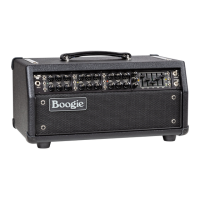
